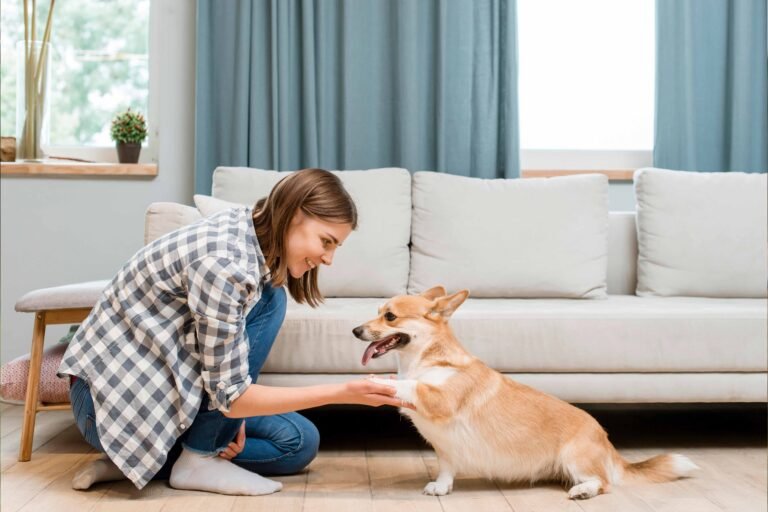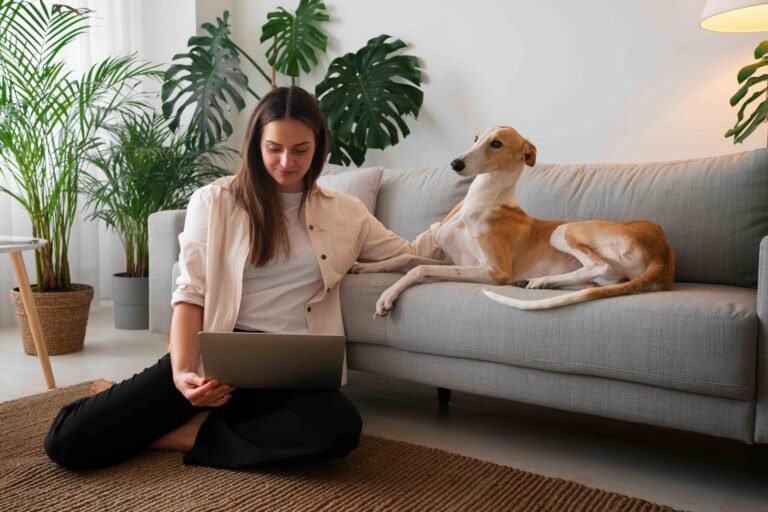Table of Contents
Pinch Collars 101: Fit, Handling, Progressions
Prong collar is a precision communication tool fit it high behind the ears, snug and even, handle with tiny cue immediate slack. Keep sessions brief, pair with rewards and go for a walk daily on a front-clip harness (not the prong). Learning Curve If you are new to prong collar training, the learning curve starts with learning how fit affects communication. Be sure to check out How to Size a Prong Collar for Your Breed before engaging in any pressure, and prevent discomfort or sagging.
Why a Prong Collar (and Why Not)
A prong collar distributes pressure uniformly around the neck so subtle, momentary leash corrections are easy to give. It’s not a pulling implement and not a panacea for towing. Imagine it like a scalpel: precise, quick, then back in its box.
- Use it if:
- You can guarantee proper fit & placement, and
- Cue → slack with cue and reinforcement (reward, food) to follow.
- Skip it if:
- You need something that will “stop pulling” on long walks (go with a front-clip harness), or
- You don’t want to invest in short, coached sessions and checking the fit of it regularly.
Fit & Setup (Non-Negotiable)
Measurement & size: Measure behind ears; select smallest gauge that holds shape (2.25 mm small/precision; 3.0-3.2 mm large/strong).
- Make a circle: Put in or take out links until the collar is worn high, and evenly.
- Two-finger check: Two fingers can fit comfortably under a prong while the collar rests on the dog; the collar may rotate but does not have to slide over ears or be worn loose.
- Orientation: Center plate below the jaw; leash ring where you clip.
- Quick-release (preferred): Must hear/feel click closed and smooth press-to-open. Do a gentle tug-test.
If the collar travels to mid-neck, it’s too large or lopsided correct with links, not strength.
To Cure is to Provide: Cue and Slack
- Cue: Small leash sign (flick/tap) for a second.
- Slack: As soon as zero pressure can be immediately regained.
- Reward: Mark and pay the one you like (eye contact, position, calm step).
- Reset: If you find yourself holding constant pressure, stop and switch to a front-clip harness and leash.
Why it works: Dogs learn what behavior turns the “signal” off and turns rewards on. Pressure without slack is mere noise. Once you have fit, how to give “soft,” mutually understood cues that gently direct your dog (as opposed to startling him) is up next. Up Next: Safer Prong Work: Fit, Timing and Progressions Taking the guesswork out of when and how to do it with a clear framework you can trust.
Week One Game Plan (10 Minutes a Day)
- Day 1–2 (Living room / hall):
- 5 reps: Collar on → treat → off (neutrality).
- 5 reps: “Watch” cue → micro cue if necessary → arching my arm forward & back → mark & treat.
- Days 3–Day 4 (Driveway/ quiet curb):
- Step → stop → watch 6–8 reps.
Instant heel introduction Add to that a one-step heel start: Step together mark first loose-leash step treat.
- Day 5–7 (Boring sidewalk):
- 6–10 reps: spins (left/right/180) with micro cue, slack and reward position.
- End with a harness walk for mileage.
Round out all sessions with an easy win. Remove the collar before your dog is worn out.
Core Skills (Micro Drills)
- 1) Watch (Name Game)
- Name→ Watch eyes → If no eyes, micro cue → Slacken → Mark when the eyes find yours → Treat.
- Two seconds of eye contact is worth 10 minutes of nagging.
- 2) Heel Start (First Two Steps of Rock Step Basic)
- Say ‘Let’s go’ → step → little shoulder surge, if any → just as you get slack back in the lead mark with a loose step… click-treat right at your seam.
- Stop after two clean steps. Don’t wait for slop.
- 3) Calm Doorway
- Door Cracks → dog leans = micro cue (tension) → would have pulled for slack but now no tension = wait your turn!
- Open fully after two calm breaths.
- 4) Distraction Redirection
- Dog locks on something? Say name → little cue → loosen lead → make eye contact → turn back for a step → treat.
Common Mistakes (Fast Fixes)
- Wearing it the whole walk: Wear prong for all sessions in progress; remove leash from front-clip harness next year.
- Low set/egg shape: Take links out/on; recreate true circle high up behind the ears.
- Pressure on: Switch to cue → slack, reward big time.
- Too-long sessions: 5-10 minutes; stop while your dog still wants to play.
- Hardware Check (to be done after every wash): 30 second look-over Inspection Received: Valmont Bike Park testing again, it was confiscated from me.
To make sense of sizing, safety, timing and cue work all at once as the structured system it is, keep reading The Ultimate Prong Collar Guide: Care, Fit & Use.
Training Progressions (Boring → Busy)
- Indoors (zero distractions)
- Driveway/yard (mild)
- Quiet street (moderate)
- Busy block/park edge (high)
- Inside stores/vet lobby (advanced threshold work)
Only move forward when you can put slack on cue and ask for slack once, your dog responds to that.
Two That Go Together(messages).
- Kick off Each Individual Amount of Meals (Instant Feedback).
- Gradually fade to variable reinforcement after behavior is smooth.
- Make the prong a signal, not a result your mark & pay is making headway.
Special Cases
- Cold hands / arthritis:
- Select a quick-release hub and train yourself to press-to-open at home.
- Multi-handler homes:
- Mark the fit (tiny scratch/dot) and post 3 steps on your door: click, tug-test, cue –> slack.
- Double coats / grooming:
- Anticipate seasonal link tweaks; recheck after a hard groom.
- Brachycephalics / neck-sensitive dogs:
- Prefer walking in a harness; if you must use a prong at all, make that training session very brief and the fit high.
Safety & Maintenance (Monthly)
- Links & tips: No cracks, holes,, burrs; Tips rounded!
- Rings/Plate: Sound welds; not sharp edges.
- Quick-release: Positive click, smooth open.
- Clean: After sand/salt wash – grit ruins latch channel.
- Re-fit: Coat/weight changed? Add/remove links.
Replace any equipment with hairline cracks, tacky release or bent hardware.
FAQs
Can a prong collar stop pulling?
No. For distance, use a front-clip harness and reinforce loose leash. Only lift the prong work as little and tidily as possible.
Where exactly should it sit?
High in the back of the ears, level back there too. If it drops, size it out with links.
How tight is “snug”?
Two fingers under a prong at rest; slightly rotate OK but must not slip over ears.
Do I need a quick-release?
Doorways, elevators, hand offs or gloves, yes — it’s safer and calmer.
Plastic tips vs stainless?
Stainless is the reliable default. Tip feel/appearance has different setup with fit & handling mattering more.
Final Thoughts
The prong is for moments, not miles. Fit it high and level, hold on to your handling cue → slack, and let rewards do all of the heavy lifting. For real-life walking and pull control, your leash goes on a front-clip harness. Short, clean reps form habits; everything else is friction.






